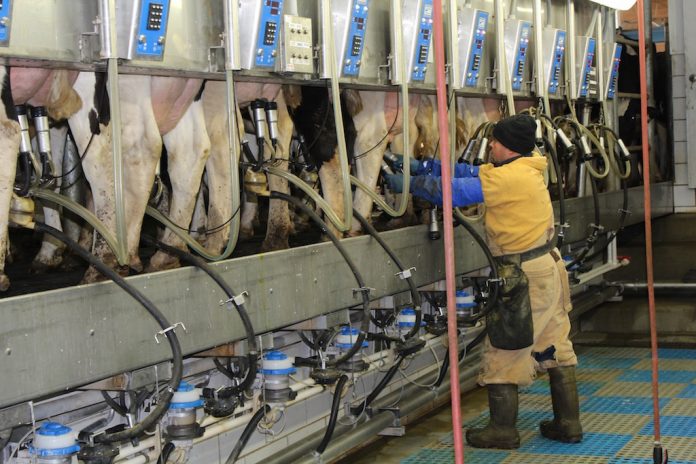By Mike Lormore, D.V.M
PARSIPPANY, N.J. — Eleven years of herd data from 489 year-end financial and production record summaries identified six key drivers of profitability on dairies based on net farm income, or NFI.
In the analysis, conducted by Zoetis and Compeer Financial, net farm income over 11 years averaged $1.23/hundredweight.
Herds that perform well in these six areas achieved healthier cows, higher profits and greater staying power, lactation after lactation: somatic cell counts, energy-corrected milk per cow, death losses, net herd replacement costs, pregnancy rates, heifer survival.
Here’s what you need to know:
1Aggressively manage somatic cell counts for profitability.
One of the biggest drivers of profitability found in the study was somatic cell count (SCC). The best performing herds in the study based on cell count had bulk tank SCCs that averaged 132,000 cells/mL. Meanwhile, the worst one-third of herds had a bulk tank SCC average of 284,000 cells/mL.
That difference netted out to a 63-cent per hundredweight differential in NFI.
It’s important to know that for every 100,000 cells/mL increase in bulk tank SCC, milk yield declines 5.5 pounds. Herds with elevated SCC had lower milk production, reduced pregnancy rates and greater death losses.
2Energy-corrected milk requires healthy cows in their milking prime.
Profitability is driven by healthy cows genetically capable of living long enough to produce milk in the prime of their careers.
According to the study, when sorted based on energy-corrected milk (ECM), the difference between the top and bottom third herds was about 20 pounds of milk per day, or 76 cents NFI/cwt.
This is due to the effect of marginal milk: The last pound of milk is always the most profitable.
High-ECM herds also had an improved 21-day pregnancy rate, lower feed cost/cwt of milk, fewer days open, lower death losses and reduced SCC.
3Minimize death loss with an engaged, qualified workforce.
Sometimes, despite our best efforts, cows die. While not a specific measure, death rates are really an indicator of overall animal husbandry practices. Excellent animal husbandry skills have tremendous impacts on herd profitability.
All data point to net farm income being positively influenced by a qualified, invested workforce capable of maintaining healthy lactating and replacement animals, maintaining efficient reproduction and limiting involuntary culling and death losses.
4Net herd replacement cost: Know the productivity potential of your replacements.
The cost of cow turnover is not just the difference between replacement heifer costs and the value of a cull cow. Consider the productivity potential of the animal being removed compared with a new cow.
First lactation cows produce 15 percent less milk than second lactation cows and 25 percent less than third lactation. As such, replacing an older cow with a first-lactation animal represents a significant loss in current productivity and individual animal cash flow.
Unmanaged cow turnover can be a huge drain on profits.
5Monitor pregnancy rates.
Pregnancy rate (PR) is a key performance indicator for reproductive performance in dairy herds. Based on the study, herds with better milk quality had improved pregnancy risk and fewer days open.
ECM yield per cow increases as 21-day PR also increases. The difference in profit between the highest one-third of herds and the lowest one-third for pregnancy risk was 54 cents/cwt.
Herds in the top one-third for 21-day PR performed at a 27.4 percent pregnancy risk, while those in the bottom one-third had 18.1 percent.
6Heifer management impacts profitability from many angles.
The study showed that both the top and bottom one-third of herds took heifer raising seriously, with top herds averaging 95 percent heifer survival rate and bottom herds averaging 93 percent survival rate.
A strong focus on heifer management impacts profitability from many angles, and the compounding impact of successful heifer management substantially supports successful long-term sustainability.
(The author is a veterinarian and director of cattle technical services with Zoetis. He also holds a master of science degree and MBA.)










